March 2017
Honoring Yesterday – Protecting Tomorrow
Vol. 48, No. 3
What’s Inside
- Meet and Greet with RESDC Leadership
- President’s Message
- Recent Events
- Our Very Own California Retirement Crisis
- The “California Rule” and a “Reasonable” Public Retirement
- Free Smoke Alarms for Seniors
- Getting to Know Your Dental Insurance
- New RESDC Member Self-Service Website
- 2017 Scholarships
- Guest Column by David Wescoe
- RESDC Evening at the Theatre
- Save the Date
- Board of Retirement Election
- Sheriff’s Museum
- Welcome New Members
- In Memoriam
March Calendar of Events
Thurs., Mar 9, 9:30am
RESDC Board of Directors Meeting
8825 Aero Drive, Suite 205
Thurs., Mar 16, 8:30am
SDCERA Board of Retirement Meeting
2275 Rio Bonito Way, Suite 200
Tues., Mar 21, 10:00am
Meet and Greet with RESDC Leadership
8825 Aero Drive, Suite 205
Fri., Mar 31
Cesar Chavez Holiday
RESDC and SDCERA Offices Closed
Meet and Greet with RESDC Leadership
 When: March 21, 2017 at 10:00 a.m.
When: March 21, 2017 at 10:00 a.m.
Where: RESDC Office, 8825 Aero Dr., Suite 205, San Diego, 92123
RESDC members and other interested parties are cordially invited to join RESDC President John McTighe and Executive Director Mark Nanzer for an informal gathering. This is your opportunity to interact with our leadership, learn more about Retired Employees of San Diego County, and to ask any questions you may have.
To RSVP, visit https://www.resdc.net/resdc-events/ or call (619) 688-9229.
Directions from I-15: Exit West on Aero Dr., drive 1.8 miles. RESDC Office is on left side.
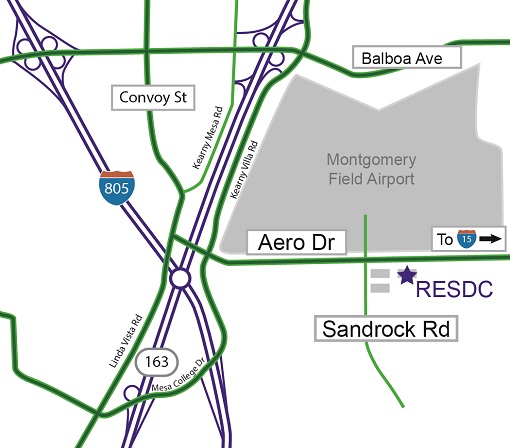
President’s Message
By John J. McTighe 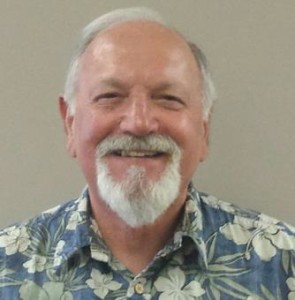
I recently returned from a week’s vacation in Costa Rica. I’ve had a love affair with Costa Rica and its people since first visiting there 20 years ago as part of a short-term mission team with my church, and have returned over a dozen times. My travels have taken me through much of the country from the province of Guanacaste in the northwest to the border with Panama in the south. At one point I considered buying a second home in Costa Rica and joining the thousands of expats who spend all or much of the year in the pleasant (but sometimes rainy) climate.
This time, I was struck by the contrasts in our two countries. Sometimes we take for granted many of the conveniences and standards of our American lifestyle until we travel abroad and don’t find those things. This can be as basic as not having hot water in the bathroom sink of our hotel. While Costa Rica is far more developed than what would be considered a “third world” country, it does struggle with having a consistent high level of built environment.
Almost all paved roads in the country are one lane in each direction and few have medians or shoulders. This is challenging to those of us used to driving on freeways with multiple lanes and high speeds. The maximum speed limit I observed on any highway was 80 kilometers per hour, which is equivalent to about 50 mph. It is particularly challenging to drive the Costa Rican roads at night because so many people ride small motorcycles and bicycles and walk on the sides of the roads (without shoulders).
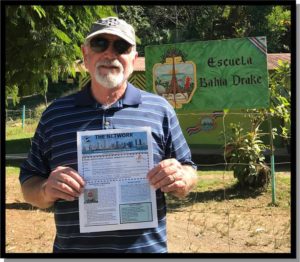
RESDC President John McTighe holding the February issue of The NETWORK in front of the school in the remote village of Drake on the Osa Peninsula.
A curiosity I first observed 20 years ago, is that cellular phone service is available across nearly the entire country. I will never forget my surprise when our hosts took us to an island off the Pacific coast. There were no noticeable facilities on the island, but our host was carrying on a phone conversation in what seemed like the middle of nowhere!
Costa Rica does not have a standing army or navy. Consequently, it is sometimes referred to as the “Switzerland of Latin America.” Not having the financial obligations required to support a military, the national government can spend a higher portion of its GDP on education, healthcare, and social security. Education through our equivalent of high school is mandatory, and from what I’ve heard, high quality. It’s interesting traveling through many remote mountain and jungle areas to see that every little village has a schoolhouse.

A friendly Costa Rican Sloth John met on his recent trip.
Costa Rica and the Tico people are more laid back than their North American counterparts. The country’s motto is “pura vida,” which translated means “pure life.” Ticos value their simple lifestyle and never seem to be in a hurry. Relationships are more important than clocks and schedules. When someone says, they will meet you at 2:00 p.m., they really mean that they’ll arrive anytime after 2:00 p.m. depending on who they meet along the way.
Finally, the flora and fauna of Costa Rica is not like anything I’ve ever experienced in the U.S. With a year-round tropical climate accentuated by a rainy season in the middle of year, most of the country is lush containing many rainforests and jungles with the animals that inhabit them. On this latest trip, we visited two national parks and saw sloths, tapirs, birds, peccaries, snakes, lizards, raccoons, and dozens of monkeys. We also snorkeled in a marine sanctuary where we saw undisturbed coral and schools of colorful fish. Nature abounds throughout the country.
Even with all the beauty and laid back lifestyle of Costa Rica, and the crazy political happenings in the United States, it was good returning home with a new appreciation what our American lifestyle has to offer.
Recent Events
- 2017 State of the County – Board of Supervisors Chairwoman Dianne Jacob presented the annual State of the County address on February 1st. She highlighted her “Seven in 17” initiatives, which included improving road conditions, “green lighting” County parks projects, and enhancing services to seniors. To watch a video of the address visit: http://www.countynewscenter.com/chairwoman-jacob-delivers-state-of-the-county-address/.
- At the February 16th SDCERA Board of Retirement meeting, the Board approved staff’s recommendation for a 2.0% Cost-of-Living Adjustment effective April 2017. The actual cost-of-living is dependent on tier level and date of retirement. For more information, visit: http://sdcera.com/board_retirement_meeting_agenda.htm.
Our Very Own California Retirement Crisis
By Stan Coombs
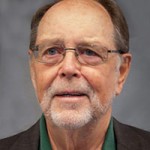 There’s a crisis brewing for American seniors; too many of us will age without the financial resources to support ourselves. Folks fundamentally concerned about elderly well-being see that as a coming crisis of needs to be addressed, others see it as a financial threat to be avoided.
There’s a crisis brewing for American seniors; too many of us will age without the financial resources to support ourselves. Folks fundamentally concerned about elderly well-being see that as a coming crisis of needs to be addressed, others see it as a financial threat to be avoided.
In a 2015 report, “Aging California’s Retirement Crisis: State and Local Indicators,” researcher, Nina Ebner, PhD, at the University of British Columbia, and Nari Rhee, PhD, at the University of California, produce a telling summary of U.S. Census and California Department of Finance statistics describing the elderly in California as a whole, and within seven regions. The regions include: Northern California, Central Valley, Sacramento, Bay Area, Central Coast, Los Angeles and San Diego. The San Diego region includes San Diego and Imperial Counties, a focused picture of our end of the State.
The report defines retirement security, as enough, at a minimum, to afford basic expenses, healthcare, housing, utilities and food, although it’s also frequently defined as the standard of living experienced before retirement. The report points to wage stagnation, the Great Recession of 2008-09 and structural changes in our retirement system, such as shifts from guaranteed pensions to 401(k)-style accounts, all contributing to retirement insecurity.
California, usually a bellwether for progressive solutions, is behind on this one. The elderly here face high costs of living, yet the state ranks near the bottom in workplace access to pensions or 401(k)s, the authors say.
Ebner and Rhee present four key findings. Severely summarized, California has a rapidly increasing senior population, the fastest growing portion of which – those 80 years and older, Latinos, Asians and women, as well as African Americans – have the fewest resources. Thirty percent of California seniors overall have insufficient incomes, and older seniors, seniors of color, older women, unmarried seniors and renters struggle to meet even basic needs. None of the state regions are exempt from the crisis. Seniors in the Central Valley and Los Angeles experience the lowest median incomes, under $20,000.
According to the report, by 2035, only 18 years away, California “seniors” (60 and older) will have increased 64%, from 7.3 million to 12 million, and “extreme seniors” (80 and older) will have increased 111%. Seniors of color will have grown from 41% to 55% of the state population, significant because households of color report less wealth due to less access to retirement plans, less secure employment, lower Social Security coverage among immigrants and significantly less financial holdings.
Women totaled 55% of seniors statewide in 2015, we’re told, but increase disproportionately as they age, totaling 61% of extreme seniors. Women are much more likely to be widowed than men, nearly two-thirds of women have severe disabilities, and accumulate less wealth due to shorter careers and lower lifetime earnings. Women and seniors of color make up three-quarters of the senior population by 2035.
About 32% of California seniors are foreign-born, we’re told, and immigrant seniors typically have lower-wage jobs with fewer benefits, lower Social Security benefits, lower levels of pension coverage and less private wealth.
Seniors in our San Diego region are expected to match the 64% increase statewide by 2035. Extreme seniors will increase 118%. Seniors of color are expected to increase from about 55% to about 65% of all seniors in San Diego.
What about resources? We’re told it takes about 75% of one’s pre-retirement income to maintain the same standard of living after retirement. The Census Bureau says 2015 median household income in San Diego was $67,320.
Seniors do less well. Ebner and Rhees report total annual personal income for seniors to be $21,327 in California, and $22,783 in San Diego. The federal poverty level for a family of two is $15,930, but that’s a national figure, commonly recognized as inadequate in high cost areas like California. It was created in 1964, based on after-tax family income less than three times the cost of a minimum basket of food, and assumed a typical family spent one-third of its income on food, unlikely with today’s expensive housing and health care.
A more realistic 200% of the federal poverty level is commonly used, and, according to Ebner and Rhees, 29% of California seniors and 28% of San Diego seniors live at less than 200% of the Federal Poverty Level. That means 3.5 million elderly statewide in 2035 and 2.9 million in San Diego. Those figures are 31% to 44% for seniors of color and women combined.
The senior resource shortage is further demonstrated by the 57% of California seniors who depend on Social Security for most of their income. Social Security benefits average $16,025. Those figures are 55% and $17,502 in San Diego.
“Aging California’s Retirement Crisis: State and Local Indicators” is a great reference resource for those interested. Yet, the most riveting argument for promptly addressing the American retirement crisis may come from the Center for Retirement Research’s use of Federal Reserve Board data. Calculating the gap between pensions and retirement savings American households have today, and what they need, the respected Center calculated $7.7 trillion, in 2015.
Pension Facts
Pension Facts at a Glance
For the 30-year period 1985-2014, investment returns accounted for over 60% of all state and local pension revenues. Employer contributions accounted for approximately 25%, and employee contributions were around 12%.
The “California Rule” and a “Reasonable” Public Retirement
By Chris Heiserman, Director
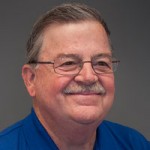 Last month I wrote about public pension “spiking” and the “California Rule” legal principle.
Last month I wrote about public pension “spiking” and the “California Rule” legal principle.
The concept of keeping retirement benefit promises made to public workers on their first day on the job sounds simple and fair. It is obviously not simple, and the question of its fairness is a matter of extreme controversy right now in California. The evidence is in major rifts between public retirement fund associations and labor groups over pension “spiking” that have resulted in court rulings now on appeal to the California Supreme Court.
The first court action came after the Marin County Employees’ Retirement Association applied “anti-spiking” limitations from a state law effective in January 2013 to all new retirees from that date forward. Previously, Marin County employees were permitted to add standby pay, callback pay, and other cash payments separate from regular salary into pension calculations at retirement, thus hiking their final compensation and their monthly lifetime benefits. Labor unions sued the Retirement Association, claiming the loss of these traditional benefits violated the “contract” created when these retirees were first employed.
In August, 2016 a state Court of Appeal upheld a lower court action that agreed the Marin County restrictions could be applied to all existing workers at retirement. The justices unanimously concluded that public employees had a vested right to a “reasonable” pension, but the benefits are subject to change before they actually retire. The California Supreme Court has agreed to hear the matter on appeal and a major decision on the future of public pension benefits is likely this year.
So, what is at stake and who will be affected by the court ruling? As a general rule, when a public employee retires the pension benefit is determined through a formula multiplying years of service by a base percentage set in an agency’s retirement plan. The resulting factor (for example, 25 service years times 2.5% = 62.5%) is applied to the worker’s final compensation. So, an employee with a $75,000 annual salary in this scenario would be eligible for an annual retirement benefit of $46,875 or a monthly pension check of about $3,906.
Applying the issue in the Marin County court battle to this example, retiring workers were prevented from adding things like standby pay and callback pay to increase their final annual earnings total. Labor unions argued that these employees were entitled to count this extra pay in their pension benefit calculation because it was routinely allowed for retiring workers. The Marin Retirement Association said 2012 state pension reform legislation changed the rules in January 2013.
A key concept teed up here by pension reform advocates is that pension benefits earned by public employees are guaranteed for years already worked, but employers should be able to enact reduced benefits applied to future service. Labor groups obviously disagree with this idea and have asked the Supreme Court to follow past precedent and rule out the possibility of diminishing benefits.
Who will be affected by the Supreme Court decision, however broad or narrow it might be stated? Simply put, the ruling could potentially impact the pension benefits of active state and local public employees across California. Public workers already retired are not in anyone’s cross-hairs in this debate and the courts in these rulings clearly indicated those benefits could not be modified.
It will be interesting to see what the Supreme Court makes of the Court of Appeals’ view that public workers have a guaranteed right only to a “reasonable” pension. Public employee pension critics feel public workers in general already enjoy very reasonable basic retirement benefits and argue that they shouldn’t be able to enhance their final compensation with extras to get a lifetime pension check higher than their pay when they were working full-time.
On the other hand, supporters of public pensions know that what’s really reasonable is the way Defined Benefit plans work. Both the employer and workers make regular contributions over the employees’ years of public service into a professionally managed retirement fund. In most cases, the pension fund covers substantially more than half the ongoing payroll for retirees from investment earnings. The bottom line is whether the amounts paid into the retirement fund by workers and agencies, plus the long-term investment earnings adequately cover the benefits for life when the employees retire.
Free Smoke Alarms for Seniors!
 Throughout the year, The Burn Institute, community volunteers, and members of the fire service take part in a collaborative effort to install FREE lifesaving smoke alarms for qualified seniors in San Diego County.
Throughout the year, The Burn Institute, community volunteers, and members of the fire service take part in a collaborative effort to install FREE lifesaving smoke alarms for qualified seniors in San Diego County.
Smoke alarms save lives. National safety statistics show that adults age 65 and older are two times more likely to perish in a home fire than any other segment of the population. Local non-profit, The Burn Institute, wants to keep our seniors safe. If you are a homeowner over the age of 62, they will install free smoke alarms in your residence, which adhere to California safety code. These free smoke alarms are equipped with 10-year lithium batteries, which last the entire life of the alarm.
Don’t get up on a ladder and risk falling—let trained professionals do it for you at no cost.
Email smokealarm@burninstitute.org or call (858)541-2277 to schedule your free smoke alarm installation today.
Statistics:
- Having a working smoke alarm in your home reduces your risk of dying in a house fire by 50-percent.
- Adults age 65 and older are two times more likely to die in a home fire than any segment of the population and for those over age 75 that risk nearly triples.
- More than two-thirds of home fire deaths result from fires in homes with no smoke alarms.
Getting to Know Your Dental Insurance
By Greg Margulies, Pacific Group Agencies
This is the time of year when we get calls from members who are just starting to use their dental insurance. Unfortunately, some of these calls will be due to their dental bill being higher than expected or due to the insurance carrier not covering a procedure. Whether you have a PPO or HMO style insurance plan, there are simple steps you can take to ensure you save money when you need services and make sure the insurance carrier will cover the required procedure.
Ameritas Dental is a PPO plan. PPO plans offer members the freedom to use any provider they choose. You are not restricted to only using a dentist that belongs to the Ameritas network. However, there are significant benefits to using Ameritas network dentists including:
- Deeply discounted rates for services. Ameritas negotiates the rates network dentists may charge and you may save as much as 50% off the rates a dentist charges people without Ameritas insurance.
- Annual deductible is lowered to only $50 from $75 if you use a network dentist.
- For those who qualify for Dental Rewards, you will receive a $400 benefit instead of $250.
- Higher benefit levels including 100% coverage for covered Preventative Services.
If not already using an Ameritas network dentist, consider switching for all the added benefits. Ameritas has over 300,000 providers nationwide including several hundred in the San Diego area. You can find a list at www.ameritas.com by clicking the Find-A-Provider link. If your current dentist is not a network provider, you may also request that your dentist join the Ameritas network!
Cigna Dental is an HMO plan. HMO plans require you use one of their network dentists. As with all HMO plans, there is no coverage if you use a non-network dentist. This plan is a comprehensive plan with coverage for around 380 dental procedures, from the routine cleaning, to crowns, implant supported prosthetics, and bridges/dentures, all at $0 member co-pays. To help ensure that you are getting the benefits you deserve:
- If your dentist is charging other than $0 for a procedure, ask for the “ADA Code”. If it is listed in the Patient Charge Schedule you received from Cigna, dispute their charge with your dental office.
- Watch out for “up-sells”. Many HMO dental offices try to up-sell the patient on a higher cost premium service instead of what is covered by the insurance. While it is your decision as to whether the upgrade is worth it, many times the standard service is fully sufficient for your needs.
Regardless of which plan you have, it is always wise to ask your dental office to confirm that your insurance covers a procedure before starting any work. You may also request that your dental office submit a Predetermination of Benefits to your insurance company. This will detail how much the insurance is expected to cover and what your expected cost will be.
New RESDC Member Self-Service Website
 As part of our ongoing effort to better serve our members, we are expanding our website to include a new member self-service area! You will soon be able to login online to:
As part of our ongoing effort to better serve our members, we are expanding our website to include a new member self-service area! You will soon be able to login online to:
- Update your phone number and email address
- Change your email preferences
- Opt to join our new Member Directory (visible only to logged in members)
- Register and pay for RESDC events with a credit card
We hope you will enjoy the added convenience and features of this new online member portal. All our other services will remain unchanged.
If you have an email address on file with us, you will receive an email in a few weeks with instructions on how to login.
If you don’t currently receive emails from RESDC and would like to like to join both our email list and the new member website, send us your full name and email address by contacting us at resdc@resdc.net or by calling (619) 688-9229. Please also let us know if you’d like go green by receiving The NETWORK by email only. We’ll continue sending you The NETWORK via postal mail unless you specify otherwise.
2017 Scholarships
By Carlos Gonzalez and Nellie Parks, Scholarship Co-Chairs
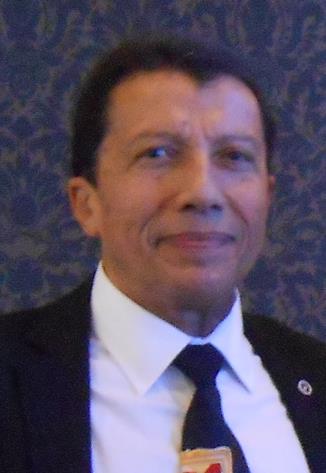
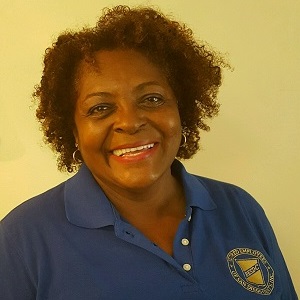 RESDC’s 2017 Scholarship Program marks its 23rd anniversary. Again, we recognize George Liddell (one of RESDC’s founders) for establishing the program, as a living legacy for the many well deserving children and grandchildren of San Diego County retirees, RESDC members in good standing.
RESDC’s 2017 Scholarship Program marks its 23rd anniversary. Again, we recognize George Liddell (one of RESDC’s founders) for establishing the program, as a living legacy for the many well deserving children and grandchildren of San Diego County retirees, RESDC members in good standing.
The application deadline is set for Friday, March 3, 2017. All applications must be delivered to our office at 8825 Aero Dr., Suite 205, San Diego, CA 92123, or in the mail postmarked no later than March 3rd. Make sure you keep your references apprised of this deadline. In fairness to all participants, late applications or reference letters cannot be accepted after the established deadline. Incomplete application packets will not be considered.
This year, five $2,000 Merit Scholarships will be awarded. Additionally, the Distinguished Community Service Award has been increased to $750. This increase is made possible by an additional donation presented to the RESDC Board by Mr. Roger Dixon (RESDC member), in memory of his friend Mr. Steve Blocker, a volunteer with the San Diego County Probation Department for nearly 20 years (Mr. Blocker was not a County employee, but his life of service inspires us all.) These newly donated funds are being combined with a continuing annual donation to the RESDC Scholarship Program by Ms. Joan Liddell in memory of her husband, George Liddell.
Awards will be presented at the end of the 2017 school year. Photos of various award ceremonies will appear in our July or August NETWORK!
Happy Days are Still Here for Retirees
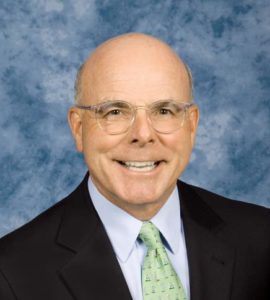 The following guest article was submitted by David Wescoe, Chief Executive Officer of the San Diego County Employees Retirement Association.
The following guest article was submitted by David Wescoe, Chief Executive Officer of the San Diego County Employees Retirement Association.
The NETWORK is one place where I can reference “FDR” and be confident that the audience knows who I am talking about! So, let me quote our former President: “The only thing we have to fear, is fear itself.”
Why? Because there is a lot of fear-inducing “noise” about public pension funds and retirement benefits. Sometimes this noise drowns out good news. A case in point: recently, there has been some very good news for California public employee retirees – like you – that you may not have heard about.
Two recent California Court of Appeal decisions contained very strong and positive language about public retiree pensions. In discussing whether “reasonable” alterations, changes or modifications that might reduce or eliminate certain aspects of a retirement benefit were constitutionally permissible, both court decisions made clear that retiree pension benefits may not be modified.
In the recent Marin County case, the appellate court said, “Our Supreme Court has repeatedly stated that [pension rights] may be modified prior to the employee’s retirement.” (Emphasis added). Marin Assn. of Public Employees v. Marin Co. Emp. Ret. Assn.
And, the other appellate court weighing in on the subject said the same thing, “The governing body may make reasonable modifications and changes before the pension becomes payable…” (Emphasis added). Cal. Fire Local 2881 v. CalPERS.
While the California Supreme Court has the final word on the constitutionality of public employees’ pension rights, the language in these two recent court decisions is comforting news for retirees. There is nothing on the legal horizon that would jeopardize the payment of your current benefit.
So, my advice to San Diego County retirees is the same it always has been: relax and enjoy your retirement.
RESDC Evening at the Theatre
On the 20th Century at Cygnet Theatre, March 15
A Few Tickets are Still Available!
 We invite you to join RESDC for an evening of theatre on March 15th! We will be attending the musical On the 20th Century at Cygnet Theatre in Old Town. We have a limited number of tickets available at a group rate!
We invite you to join RESDC for an evening of theatre on March 15th! We will be attending the musical On the 20th Century at Cygnet Theatre in Old Town. We have a limited number of tickets available at a group rate!
Founded in 2003, Cygnet Theatre is a leading regional company and one of San Diego’s cultural icons. Each year, Cygnet Theatre creates an eclectic mix of 6 or 7 mainstage productions, from classics to Broadway-style musicals.
On the 20th Century Show Overview: “It’s nonstop laughs aboard the Twentieth Century, a luxury train traveling from Chicago to New York City. Luck, love, and mischief collide when the bankrupt theater producer Oscar Jaffee embarks on a madcap mission to cajole glamorous Hollywood starlet Lily Garland into playing the lead in his new, non-existent epic drama. But is the train ride long enough to reignite the spark between these former lovers, create a play from scratch, and find the money to get it all the way to Broadway?”
When: Wednesday, March 15. Show begins promptly at 7:30pm. We recommend arriving 30-45 minutes early to locate parking and pick up your tickets from the RESDC representative.
Where: Cygnet Theatre in Old Town, 4040 Twiggs Street, San Diego, CA 92110
Tickets: A limited quantity of group-rate $30 tickets are available for purchase through RESDC. Please make a check payable to RESDC, enclose with the Reservation Form, and mail to 8825 Aero Dr. Suite 205, San Diego, CA 92123. Please inform us of any special requirements, e.g. wheelchair, difficulty with stairs, etc. Tickets will not be mailed. Tickets will be distributed by a RESDC staff member starting at approximately 7:00pm on the evening of the performance outside the Cygnet Theatre Box Office.
Directions
From I-8: Take I-8 west and exit at Taylor Street. Cross over the freeway and make a right onto Taylor Street. At the third traffic light, make a left onto Juan Street. Make a right at the second stop sign onto Twiggs Street. The theatre is the first building on the right.
From I-5: Take I-5 to the Old Town Avenue Exit. Head east on Old Town Avenue (left from I-5 South, right from I-5 North). Make a left on San Diego Avenue. Follow San Diego Avenue until it ends at Twiggs Street. Make a right. The theatre is the second building on the left.
Parking
There are several free parking lots in Old Town, all within walking distance of the theatre. Street parking is free, but please be aware that there are often time limits, especially along San Diego Avenue.
There is a small free public lot located next to the theatre, however, it fills up fast. A courtesy parking attendant is stationed at this lot beginning two hours prior to the performance. The attendant can assist you with directions to alternative parking options.
For no-hassle parking, we recommend parking in the Caltrans lot just a few blocks away. Located on Taylor Street, at the end of Juan Street, this lot is free weekday evenings after 5pm and all day on weekends.
Save the Date!
General Membership Meeting
When: April 18, 2017, 12:00 noon
Where: Serra Mesa-Kearny Mesa Library
9005 Aero Drive, San Diego, CA 92123
Program:
- Larisa Wilmert of Lopez & Wilmert, LLP – Learn about the benefits of a living trust estate plan.
- Road Scholar Ambassador presentation – Learn about Road Scholar’s enriching travel adventures and the value of lifelong learning.
Two SDCERA Board of Retirement Seats Up for Election
 An election for the General Member Second seat, the Retired Member Eighth seat and the Alternate Retired Member seat on the SDCERA Board of Retirement will be held on May 2, 2017. The Board of Retirement is SDCERA’s governing body, responsible for the administration of retirement benefits and investment of Trust Fund assets.
An election for the General Member Second seat, the Retired Member Eighth seat and the Alternate Retired Member seat on the SDCERA Board of Retirement will be held on May 2, 2017. The Board of Retirement is SDCERA’s governing body, responsible for the administration of retirement benefits and investment of Trust Fund assets.
Candidate nomination packets will be available on March 3, 2017 at the County Registrar of Voters (ROV) office, located at the County Operations Center. Candidates must submit their Candidate Petition and a Candidate Statement to the ROV office no later than 5:00 p.m. on March 20, 2017.The successful candidates will serve a three-year term on the Board of Retirement beginning July 1, 2017. Watch for news about a Candidate forum in the April NETWORK.
William B Kolender Sheriff’s Museum
By Mark Nanzer, Executive Director
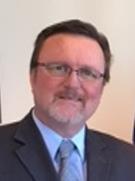
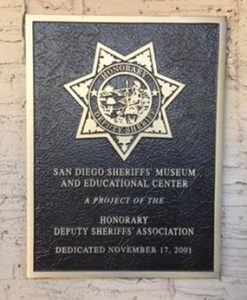
I recently had the opportunity to visit the San Diego County Sheriff’s Museum, located in Old Town San Diego. For those of you who have not had a chance to visit this historic museum, I highly recommend you make a day of it. Just give yourself plenty of time before going to grab some great Mexican food, because there’s much to see!
The purpose of the museum is to educate, interact, inspire and to remember those who have given the ultimate sacrifice in the performance of their duty.
These goals are truly represented as you visit the amazing exhibits and see the remarkable historical artifacts. Among the excellent exhibits on display, check out history and biographies of County Sheriffs including the County’s first Sheriff, Agoston Haraszthy, who served in 1850! There are also exhibits for Women in Law Enforcement, Search and Rescue, Senior Volunteer Patrol, and Explorers. It also contains cars, motorcycles, real life jail cells from various eras, and replica Sheriff offices from the 1850s, 1940s, and present.
The Sheriff’s Museum consists of 6,800 square feet of exhibit space, covering the entire history of the San Diego County Sheriff’s Department from its inception in 1850 through today.
 Adults will appreciate the rich history of the department reflected throughout the museum. Ask one of their docents to take a picture of your entire family locked in a jail cell!
Adults will appreciate the rich history of the department reflected throughout the museum. Ask one of their docents to take a picture of your entire family locked in a jail cell!
Check the website at www.sheriffsmuseum.org for directions, hours of operation, and special events.
The Sheriff’s Museum is always looking for dedicated volunteers to serve as docents. For more information on volunteering, please email the museum at: wbksheriffsmuseum@gmail.com.
Welcome New Members
Janice L. Dickson
Jesus Gamez Jr. – Public Works
Carolyn Gordon – Agriculture, Weights, & Measures
Pauline Hollomon
Kathryn M. Maracin
Carolyn I. Secor – Environmental Health
Julie Stollenwerk – Probation
Paola Wilckens-Gjata – Child Welfare
In Memoriam
Getachew Alemayehu – Environmental Health
Helen Andrewson – Health Education
Doris Bates – Surviving Spouse
Barbara Bracken – Surviving Spouse
Constance Carlson – Surviving Spouse
John Cash – Public Works
Peter Cuthbert – Parks & Recreation
John Davis – Surviving Spouse
Rosa Diaz* – Human Resources
Catherine Dilts – Health & Human Services
Mary Dodson-Newhouse – Health & Human Services
Bernie Estes
Ruben Gonzales – Auditor & Controller
Carol Goss – Probation
Barbara Hagood – Health & Human Services
Wilfred Henderson
Bettye Jackson
Patricia Johnston – Sheriff
Richard Jones
Robert Lee – Social Services
Thomas Light
Rosa Lopez – Municipal Court
Calvin Mandel* – Health & Human Services
Willie Marbrey – Registrar of Voters
Harold Mattly
Florence McCarthy – Health & Human Services
Rodolfo Mendoza – Surviving Spouse
Estelle Metz – Health & Human Services
Rafaela Miranda – Health & Human Services
George Morrell
Chau Nguyen – Public Welfare
Marguerite Phillips – Surviving Spouse
Walter Pietila
Gary Privetts – Auditor & Controller
James Reels – Social Services
Elaine Rhea – Social Services
Elvira Schmitt
Hobart Steely – Air Pollution Control
Daniel Tron – District Attorney
Armando Viray – Sheriff
Mon Wai – Surviving Spouse
Ruth West – Surviving Spouse
Opal Faye Whipple – Surviving Spouse
*Active
Gone from our sight, but never our memories,
Gone from our touch, but never our hearts.
The surviving spouse of a member is eligible for RESDC membership. For enrollment assistance, call (619) 688-9229.
Member Privacy
Any retiree or surviving spouse who does not want his/her death notice published in the “In Memoriam” section of this newsletter may notify the RESDC office and your privacy will be maintained.
NETWORK is the official monthly newsletter of the Retired Employees of San Diego County, Inc. (RESDC), a private non-profit organization.
The information printed in the NETWORK is believed to be from reliable sources. However, no responsibility is assumed by the NETWORK for inaccuracies contained herein.
Business and Inquiries: Business matters and address changes may be recorded on our voicemail at any time, call (866) 688-9229. Please spell your name so the correct member record can be located.
Retired Employees of San Diego County, Inc.
8825 Aero Drive, Suite 205 | San Diego, CA 92123
Office Hours: 9 a.m. to 2 p.m. Monday through Friday
TELEPHONE: (866) 688-9229 Toll Free
FAX: (619) 688-0766
E-MAIL: resdc@resdc.net

